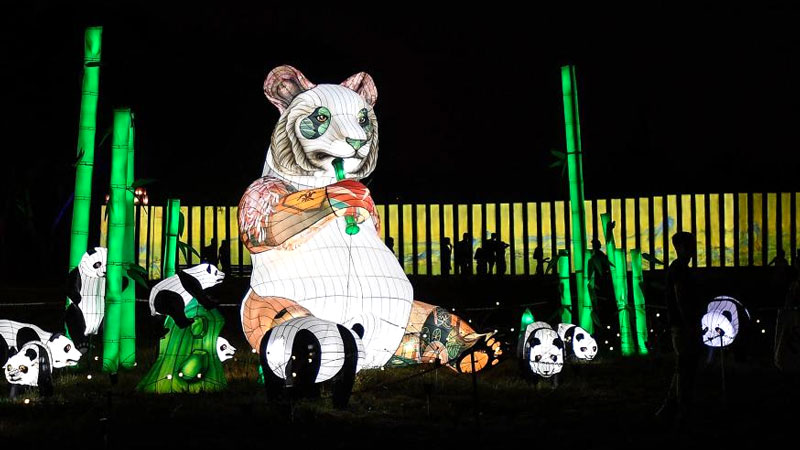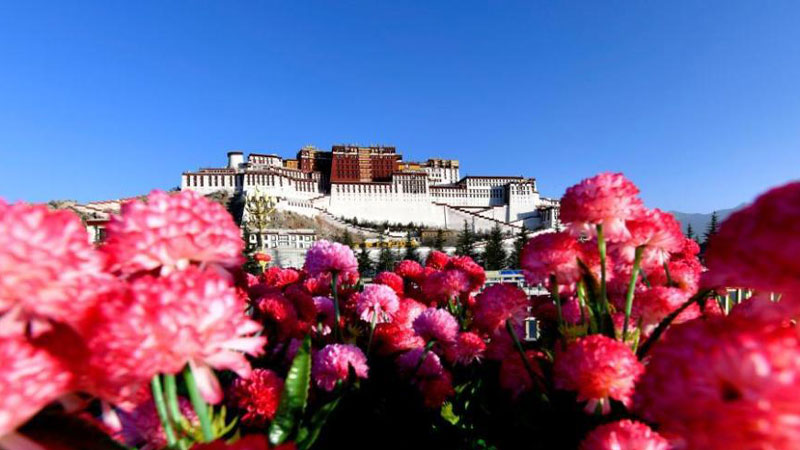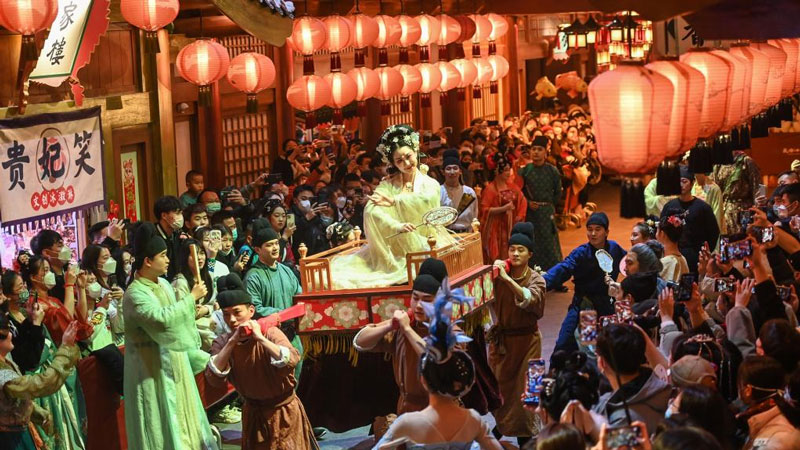"Museum without walls" improves protection of traditional culture in SW China
In 1998, an eco-museum was established in Suojia Miao, Yi and Hui township, Liuzhi special region, Liupanshui of southwest China's Guizhou province, to preserve and extend the local original culture.
Consisting of 12 villages, including Gaoxing village, the eco-museum is different from traditional museums. It is not enclosed by walls or fences and what it showcases is more than collections.
Xiong Shaozhen, a 77-year-old resident of Gaoxing village, weaves everyday with a loom in a spacious hall of a low wooden house in the village. Her daughter-in-law even learned the craft from her.
The costumes, language, music, and even the way of production of the local community are all "living exhibits" that are collectible, said Luo Gang, the curator of the museum, who joined the preparation of it after he graduated from university in 1997.

Photo shows a spinning frame exhibited in the eco-museum of Suojia Miao, Yi and Hui township, Liuzhi special region, Liupanshui of southwest China's Guizhou province. (Photo provided by the government of Liuzhi special region)
There are 25 such museums in eight cities and prefectures of Guizhou province, including those under planning, said Yang Zhengquan, an official with the provincial bureau of cultural heritage of Guizhou, adding that these museums are built to guide villagers to protect local natural landscapes, traditional customs, and ways of production.
Compared with traditional museums, eco-museums come with different "collections" and are not confined in buildings. They are in line with sustainable development principles and able to benefit local communities through the promotion of original cultures.
In 2014, Gaoxing village was listed in a traditional Chinese villages catalog. However, Luo found that there were fewer and fewer looms and spinning frames in the village.
He then learned that many young people in the village went out of town for work, and most of the looms and spinning frames, which were manufactured by villagers, were not durable.
Therefore, he applied for a budget from relevant departments and invited professional craftsmen to produce looms and spinning frames for the villagers. In just months, 50 looms and 50 spinning frames were completed. He asked each villager that received the machine to not only use it but also train an inheritor of the local weaving technique.
In Suojia Miao, Yi and Hui township, most of the folk houses are built with local materials, such as wood, mud, and stones. However, their roofs are all made of straw and need regular replacement.
As the living standards of the residents rose in recent years, some of them started using bricks and concrete to build their houses. However, Luo is not concerned about such an impact on local tradition because the villagers are aware of the importance of protecting their old houses.
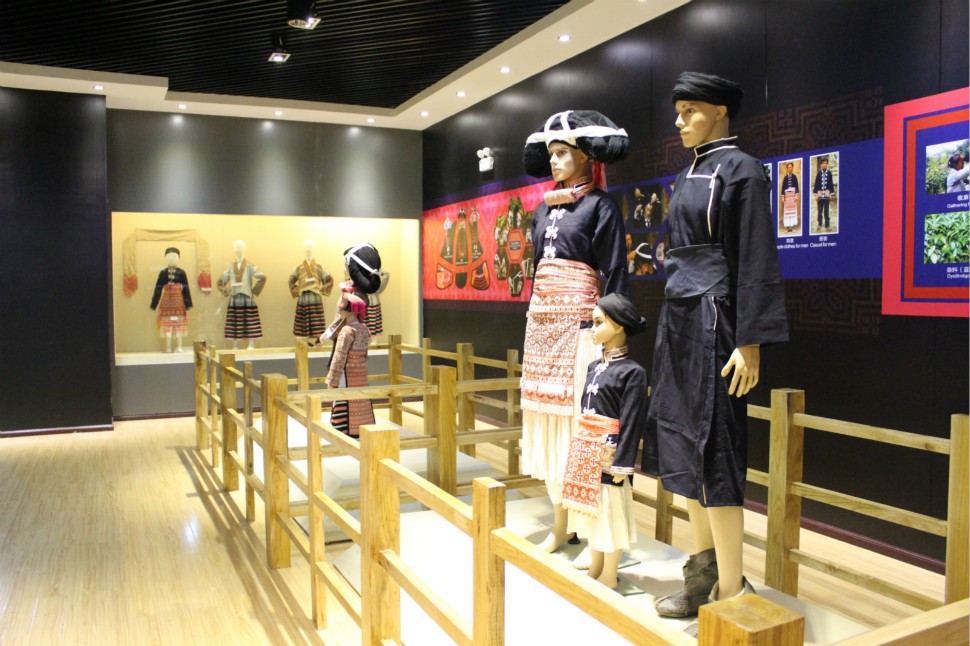
Photo shows batik clothing exhibited in the eco-museum of Suojia Miao, Yi and Hui township, Liuzhi special region, Liupanshui of southwest China's Guizhou province. (Photo provided by the government of Liuzhi special region)
In 2017, the wood house of villager Yang Chaozhong began to lean, but he didn't want to transform it into a brick-concrete structure.
Yang said this house has been passed down for generations, so he was not willing to make the trade-off.
He planned to repair it but was on a short budget.
Later, Luo learned that there were ten households in the village that were facing similar situations as Yang was.
Therefore, Luo applied for a fund and invited a repair team to restore the original appearance of these houses. The repairing, which was also joined by the villagers, was completed in three months.
"One of the features of the eco-museum is to guide the villagers to perform independent management and activate their passion for protecting their traditional culture," Luo explained.
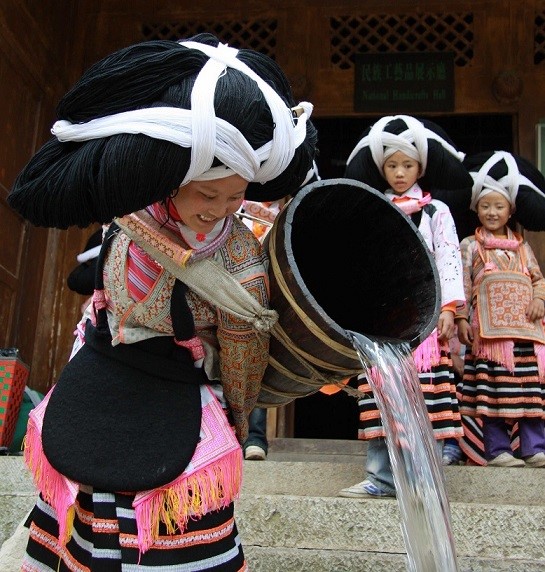
Photo shows villagers in traditional Miao ethnic costumes in a village in Suojia Miao, Yi and Hui township, Liuzhi special region, Liupanshui of southwest China's Guizhou province. (People's Daily Online/Zhang Jing)
The eco-museum also boosted local tourism, and villager Yang Ermei is one that has benefited from it.
The woman offers traditional dancing performances for visiting tourists together with a dozen of other villagers. They also purchased a loom to make souvenirs.
Wang Zhu, an official with the Guizhou Provincial Department of Culture and Tourism, told People's Daily that thanks to the implementation of a series of policies in recent years, the protection of traditional culture has become a consensus in the local community.
According to the official, the province is now home to over 300 intangible cultural heritage workshops, which not only create jobs and improve residents' income but also give villagers more vigor.
Photos
Related Stories
- China’s village museums boost rural vitalization
- Modern museum system takes shape in China
- Nighttime museums make people's cultural life more splendid
- Exposition on development, achievements of Chinese museums held in Zhengzhou
- Guangzhou branch of the National Archives of Publications and Culture opens to public
Copyright © 2023 People's Daily Online. All Rights Reserved.







